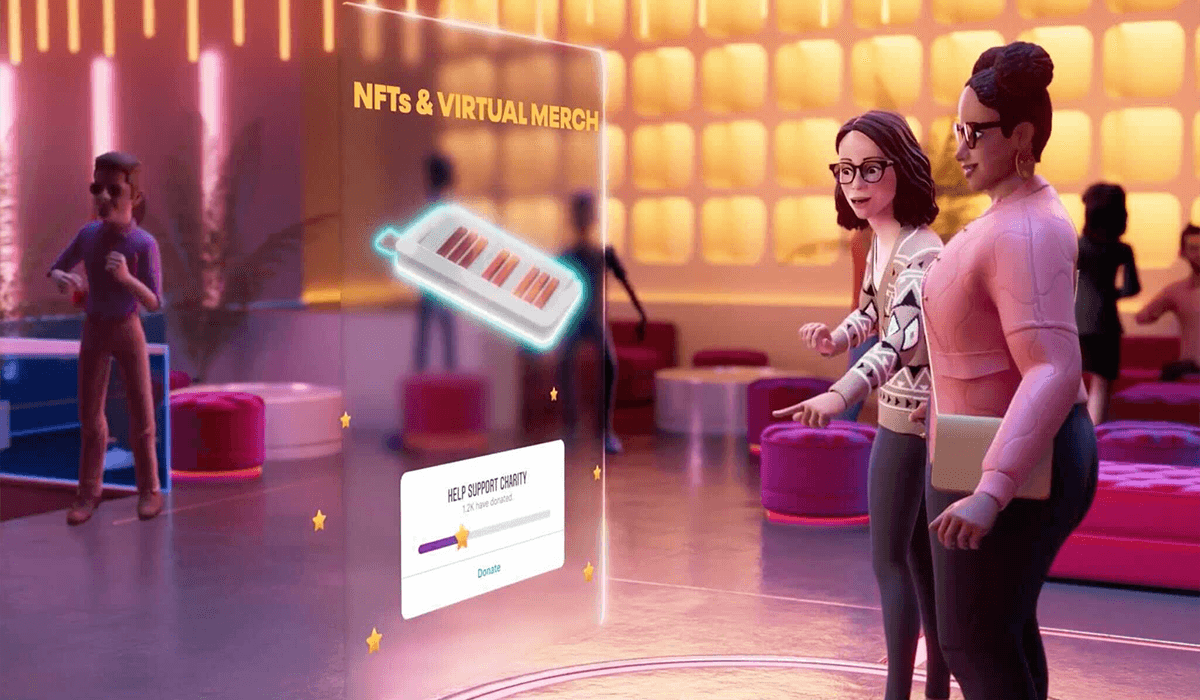
Digital Banks Is In The Metaverse
In the metaverse bank customers get personalized banking services at the comfort of customers’ homes. They can carry out their banking activities while enjoying a cup of coffee or tea at home with a very personal touch.
After Mark Zuckerberg announced that he would change the name of Facebook to Meta Platforms Inc. or Meta on October 28, 2021, the metaverse suddenly became the most current topic and many people talked about on this earth.
In fact, a virtual world like this metaverse has existed for a long time. Just look at the virtual world of Second Life which was created in 2003 by Linden Lab, a company based in San Francisco, USA and is still operating today.
In 2013, Second Life had approximately one million regular users; at the end of 2017, the number of active users is estimated to be between 800,000-900,000 users.
Then why did the metaverse suddenly become something of a geek? Because the one who spoke was the founder of Facebook [according to the Statista page, Facebook is the most popular social media with 2.85 billion daily users, the metaverse has become like a magnet with enormous attraction.
How Much Longer Will This Metaverse Be a Part of The Lives?
According to Mark, the defining quality of the metaverse is the feeling of presence as if you were there with someone else or somewhere else.
Feeling truly present with other people is the ultimate dream of social technology. That's why we focus on building the metaverse as expressed by Mark Zuckerberg in his message in the founder's letter Meta.
Then, how much longer will this metaverse be a part of the lives of many people? The answer: soon!
The prediction was at least expressed by the founder of Microsoft, Bill Gates, as reported by Fortune. He predicts in the next 2-3 years office meetings will also be held in the metaverse.
In the next two or three years, I expect most virtual encounters to move from a 2D camera grid to a metaverse, a 3D space with digital avatars as Gates revealed just days after Google and Meta (Facebook) decided to re-enact work from home in 2022 due to the emergence of the omicron variant which makes the Covid-19 pandemic uncertain when it will end.
Gates believes, rather than meeting face to face in an office space, meetings use avatars for interaction and are equipped with motion capture technology and spatial audio to make the metaverse feel like real life.
Metaverse Trends in Banking
This trend is also starting to grow in the banking industry. In South Korea, Industrial Bank of Korea, a state-owned industrial bank headquartered in Jung-gu, Seoul, South Korea, plans to launch the social media platform Cyworld Z metaverse.
The social media platform uses its own virtual currency “Dotori.” IBK wants to establish IBK Dotori Bank in the metaverse, which will launch a simplified financial product for Cyworld Z users. One of these products is the Dotori passbook which will reward users according to the number of Dotori they bought.
Other big banks such as KB Kookmin, NH Nonghyup and Hana Bank are also planning to move towards the metaverse.
NH Nonghyup Bank targets March 2022 to launch the “NH Dokdo-verse,” which is a metaverse replica of Dokdo Island. The bank's mission is to bring clients closer to islands that are difficult to visit in real life.
Visitors to Dokdo will be able to play games such as fishing and buying properties on the island. NH Nonghyup Bank has been actively promoting Dokdo Island, an area under South Korean control, which Japan has opposed for years. Because of this beautiful island, relations between South Korea and Japan have been overshadowed by more than 300 years of strife.
Then there is another KB Kookmin Bank also plans to open a virtual branch office in Metaverse. KB Kookmin is currently testing metaverse technology as the main channel for its financial services. KB also said it would experiment with online gaming platform Roblox. Then there is Hana Bank which has set up a kind of task force for digital innovation, in which the metaverse is also included.
Bank of America and BNP Paribas Announced Using VR or Augmented Reality (AR)
Bank of America recently announced that it will be launching virtual reality (VR) training for its employees at nearly 4,300 financial centers across the country.
Each financial center in its network will use VR headsets to practice a variety of skills including strengthening and deepening client relationships, navigating difficult conversations, and empathetic listening and responding.
Through real-time analytics embedded in this technology managers can also identify skill gaps and provide teammates with targeted follow-up coaching and personalized guidance to further improve team performance.
Another bank using VR or augmented reality (AR) is BNP Paribas, which launched a virtual reality app that allows retail banking users to access their account activity and transaction records in a VR environment. Bank of Kuwait also missed out on using VR in designing a new branch. Then there is Citi, which has explored a program using holographic workstations for financial trading.
The Metaverse can be described as the internet being turned on, or at least rendered in 3D. Basically, it's an endless and interconnected world of virtual communities where people can meet, work and play, augmented reality glasses, smart phone apps or other devices.
Virtual Interaction with Customers
Perhaps the clearest example where the metaverse can impact banking is in customer interactions. Many banks already offer face-to-face video services with customers and use interactive teller machines using video connectivity and more robust functionality than ATMs. But in the future serving customers in the virtual world will be an absolute, and meteverse is the answer.
In fact, recent research published in the Digital Banking Report found that nearly half of financial services executives surveyed believe that 1 in 5 customers will use virtual or augmented reality technology for their daily transactions.
Virtual space is ideal for customer or bank customer interaction because it is not limited by physical space. As more and more financial service providers are gradually moving towards digital banking, the idea of a virtual bank in the metaverse world does not seem far-fetched.
In the metaverse bank customers get personalized banking services at the comfort of customers' homes. They can carry out their banking activities while enjoying a cup of coffee or tea at home with a very personal touch.
Customers will get their services anytime, anywhere and banks will be able to reduce costs because they don't have to invest in a physical location. Like that, the metaverse is indeed the future of banking.
So, what about banking in the country? It will definitely lead to it too. The time will not be long, because this metaverse is like a 'fulfillment' of the banking digitalization transformation process. The digital bank's grand plan is the metaverse. If banks that are currently being transformed into digital banks can be likened to cocoons, they will not be able to turn into beautiful butterflies if they do not 'metaverse'. It's only a matter of time and time will tell.



